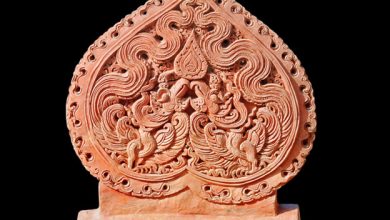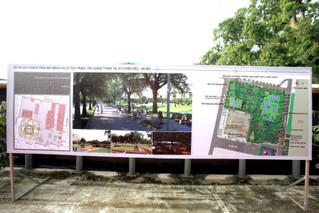Online Exhibition “The Good Wind of the Double-Fifth Festival”
The Double-Fifth Festival, which is celebrated on the fifth day of the fifth lunar month, is a traditional festival of Vietnam and several other East Asian countries. In the past, the rituals and customs of this festival varied between the royal court and the commoners.
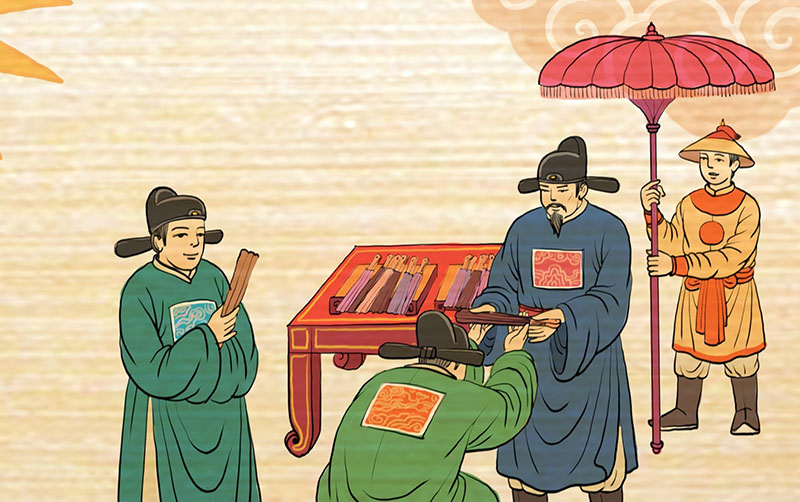
Painting of a fan-awarding ceremony in the royal court
Under the Lê Dynasty, the king and the court solemnly held ancestral worshipping ceremonies, regular court meetings, and bestowed banquets and fans to the mandarins as an expression of deep human values and to demonstrate the authority of the Son of Heaven. Rituals were held at Thái Miếu and Chí Kính Palaces. One of the special ceremonies to be held on the Double-Fifth Festival was the fan-giving ceremony, when the king bestowed fans to the mandarins. Before that, the court assigned the Ministry of Finance to allocate money to make preparations for the ceremony. Đào Xá village of the old Hải Dương Province (now Đào Quạt village, Hưng Yên Province) was assigned with the task of making fans from various types of materials including ivory and tortoiseshell to serve the royal court, mandarins, noblemen and popular fans to serve the ordinary people’s needs. Once finished, fans would be allowed to be offered to the Temple of Civil Mandarins and the Temple of Martial Mandarins, and then bestowed by the king to the Princes, incumbent civil and martial mandarins and units of the Board of Finance. Fan-giving ceremony was also held at Lord Palace. By giving fans, the king wanted to show his grace and bestow “Blessings, Health, Peace” on his subjects.
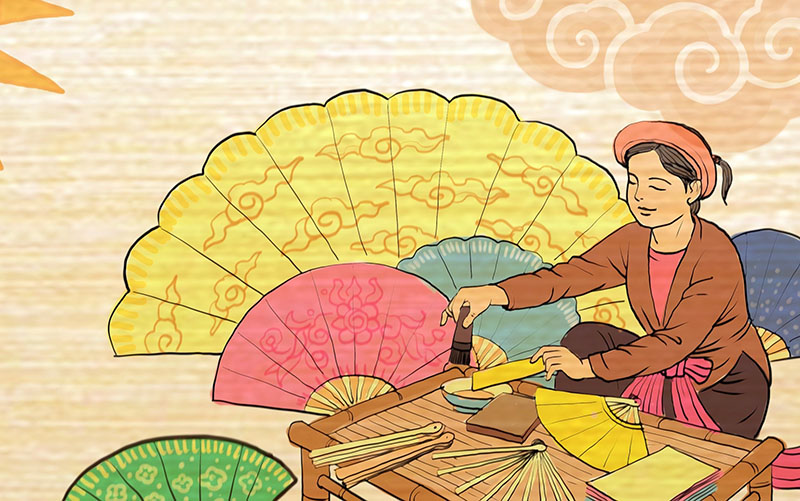
Painting of the fan-making process in Đào Xá Village.
In addition to the special features of the royal rituals, the Double-Fifth Festival also has very unique customs among the commoners, including the practice of wearing five-colored amulets. The five-colored amulet (also known as the string of longevity, tassel amulet or the magic charm bag) is sewn from pieces of silk or cloth scraps into the shape of local fruits and tied with five-colored thread with tassels to repel insects and protect bearers from bad wind. It is also worn as a kind of jewelry that brings good luck and peace. In the twentieth century, there was a small street, known as Hàng Mụn Street, in Hanoi specializing in making five-color amulets on the occasion of the Double-Fifth Festival. This was a street of poor people, living on small business in the market and sewing for tailor shops. Because they did not have a lot of money, these poor people bought rags of different colors from tailors and brought them home to sew hats, bibs for children, and multicolored hats with small glass facets. These people made strings with iridescent threads carrying “tassel and bag amulets” with tin badges. After the August Revolution, Hàng Mụn Street was renamed Hàng Bút. The old name of the street, however, has become deeply rooted in the mind of the Hanoians because it was associated with a unique custom and cultural practice on the Double-Fifth Festival.
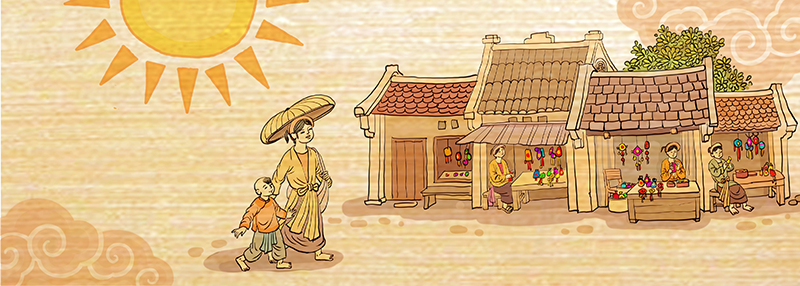
Painting of the Hàng Mụn street selling different types of amulets
In order to create more tourism products to serve visitors, every year Thang Long – Hanoi Heritage Conservation Center organizes exhibition activities to introduce traditional culture and unique customs practiced by Vietnamese people in the past during the Double-Fifth Festival. For the prevention of the Covid-19 pandemic, this year’s Double-Fifth Festival features an exhibition titled “The Good Wind of Double-Fifth Festival”. The exhibition is implemented in an online format so that visitors who do not have conditions to go to the Thang Long Imperial Citadel physically can still access useful display content, learn unique customs in the royal court, and experience folk forms of ailment treatment and prevention.
This year’s exhibition has many new features. For example, for the first time a royal fan with the size of 2.4m inscribed with a poem written by King Le Hien Tong in 1503 will be displayed and introduced to the public. Several fan models for kings, queens and mandarins are also tentatively restored based on historical descriptions. The five-colored or iridescent amulets were restored based on the artifacts currently housed at the Quai Branly Museum (France). In addition, there is also the colorful space of a shop on the old Hàng Mụn Street. The customs of the Double-Fifth Festival such as picking Southern medicinal leaves, washing hair with fragrant leaf water, cold-easing steambath, etc. are also introduced along with ox-shaped mugwort leaves because this year is the Year of the Ox.
Online exhibition time: From 10/6/2021, on the following websites: www.hoangthanhthanglong.vn and trungbayonline.hoangthanhthanglong.vn.
THĂNG LONG – HÀ NỘI HERITAGE CONSERVATION CENTRE


